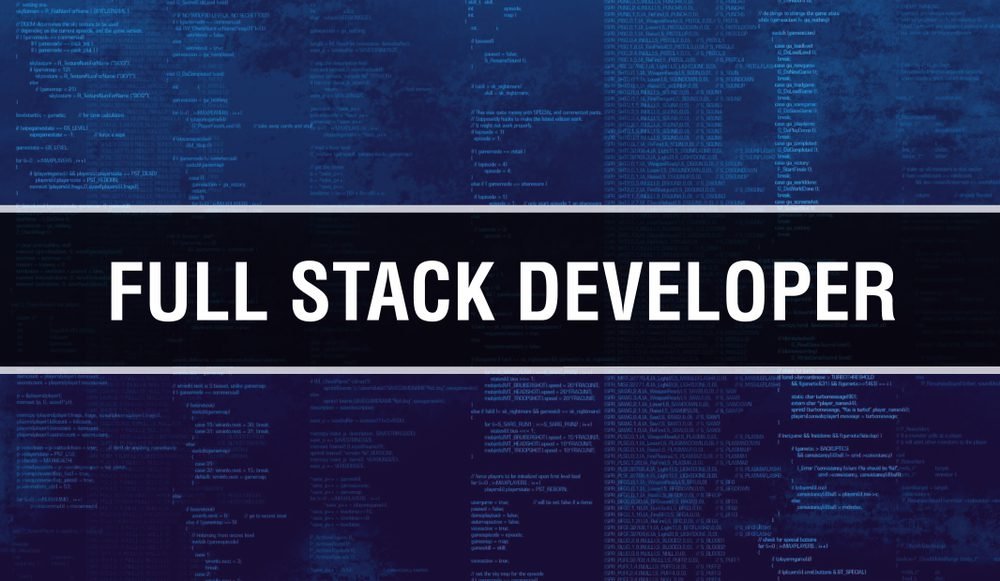Amazing Facts About Full Stack Developer You Don't Know
Quick adaptations by ever-evolving technologies cater to organizational requirements and need full-stack capability to juggle between practical skills, multi-tasking capacities, and domain knowledge for the Full stack developer to suggest practical solutions.
The full-stack developer handles the layers of
•Presentation at Front end layer
•Logic at the Backend layer
• Multi-tasking at the sub-layers of data
The technologies vary for ends, servers, layers, etc and the stack is a collection of such technological modules. Thus a full-stack developer combines the various sets of technologies to work together in sync with each other while producing accurate desired outcomes. The full-stack developer multi-tasks and copes with systems engineering, solutions for databases, servers etc which are client-facing. The various stack depending on their applications is called native stack, web stack or mobile stack depending on client/ project requirements. For those interested in becoming a full-stack developer here are ten amazing facts you probably don’t know about.
Fact-1: In 2008 on June 3rd the first full-stack development definition emerged.
The MD-Burns & McDonnell Terminals group Randy Schmidt, is credited with describing the full-stack as capable of multi-tasking with design, styling, markup, and behaviour programming.
Fact-2: Full-stack includes both back and front end programming and development.
Thus a full-stack developer combines the various sets of technologies to work together in sync with each other while producing accurate desired outcomes. The full-stack developer multi-tasks and copes with systems engineering, solutions for databases, servers etc which are client-facing.
Fact-3: According to Wikipedia 710 coding languages are available globally.
The more programming languages you know the better your stack capabilities. Achieving this capability is an on-going process that never ends.
Fact-4: The terms “web development” and full-stack development were synonymous from 1999 to 2004.
Currently, web development is the process of coding, markups, web design and testing specific to inter and intranets. While the full-stack is a capability of technologies for programming both ends of the system.
Fact-5: Coderhood claims there are 19 varieties of stack developers.
Like front-end, back-end, mean-stack, web, desktop, middle-tier, mobile, graphics, game, Big Data, CRM, DevOps, embedded, high-level, low-level, WordPress, and security developers besides the SDET. Wow!
Fact-6: The Evan Data Group claims a whopping 23 million developers are currently present and will be 27.7 million by 2023.
Some of the success tales include the world’s richest and most famous like Bill Gates, Mark Zuckerberg, Jeff Bezos, and Larry Ellison. Inspiring? Acquiring full-stack capabilities pays!
Fact-7: BLS reports suggest a 27 per cent rise in web developer jobs by 2024.
According to reports from Glassdoor and the chart below, the median range of salary for fresh full-stack developers is 19 to 21K Rs in India and 288 to 313K Rs with experience. This augurs well for the career aspirants and proves that skill upgradation and certification helps. Continuous learning always keeps you ahead!
Fact-8: Full stack development has been and continues to be among the best careers and in-demand jobs. The demand for full-stack developers increases proportionately with developments in data volumes and technology. Over the last decade, the demand for skilled professionals has outstripped supply taking the payouts for the skilled full stack developers far beyond the median salary ranges according to the 2018 report Best Jobs of 2018 by Indeed.com.
Fact-9: The average salary for a full-stack developer is demand based.
According to Indeed, the average salary was 111,640 USD pa. Glassdoor states front-end developers were paid 88,680 USD pa and backend developers fetched 70,676 USD pa.
Fact-10: A Full stack has many career benefits.
Some of the full stack developer career advantages are
• Easy switching to both ends through skill upgradation.
• Employability terms are better for an employer who need not hire more developers than required.
• Higher Salary due to the wider range of skills.
Conclusion:
The very pace of changes in skills and technology required of full-stack developers makes them a cheaper option than recruiting various developers at different ends. They are the jack-of-all-trades one-stop solution in web-based development of software applications.
If the facts above have convinced you to become a full-stack developer then do a full stack course with Imarticus Learning. Besides being the best-of-class online course for learning they offer soft-skill training, assured placements, and skill-oriented practical syllabi included as key takeaways.
The payouts are high and the small investment in learning can help you earn it. Act today!










